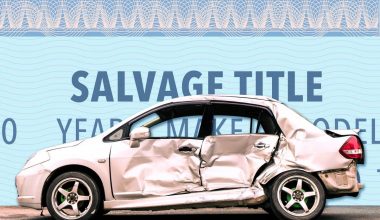It is simple to borrow against the cash value of a permanent life insurance policy. There are no loan criteria or conditions (other than the amount of cash value), and the funds can be used for whatever purpose you choose and repaid whenever you want, plus a life insurance policy loan offers comparatively cheap interest rates. The disadvantage? If you fail to pay the interest on the loan, you may lose your policy (and its cash value) and face a large tax bill. Borrowing against your life insurance policy is a simple way to get cash if you can keep up with your payments.
Can You Borrow From Your Life Insurance Policy?
Loans against permanent life insurance plans are often available, but not against term life insurance policies. Cash value accounts are used as collateral for life insurance loans. Because term life insurance contracts do not include a cash value account, policyholders cannot borrow money from their insurer against them. This is one advantage of permanent life insurance over term life. A term policy has only one financial consideration: the beneficiary’s death payout if the insured individual dies during the policy term.
Another scenario is permanent life insurance, such as full life. When you get whole life insurance, a portion of your premium payment goes toward the death benefit, while the rest goes into a cash value account that grows in value over time.
If you are thinking about borrowing from your life insurance policy, keep in mind that building cash value takes time. You must achieve a particular threshold before you can borrow cash value from the policy, which may prevent you from borrowing against the policy when you need it. This is distinct from a savings account, which lets you withdraw funds as needed, usually without first hitting a specified level.
Furthermore, if you fail to repay the loan’s interest, the amount owed may be taken from the death benefit. If your family still plans to rely on your life insurance policy, policy defaults can risk your financial security.
How Much Can You Borrow From a Life Insurance Policy Borrow?
The amount you can borrow from a life insurance policy varies depending on the insurer, but the maximum policy loan amount is normally at least 90% of the cash value, with no minimum.
When you take out a policy loan, you are not deducting money from your account’s cash value. Instead, you borrow a loan from the insurance and use the cash value as collateral. This is a huge advantage because the cash value remains in the life insurance policy and earns interest.
You are not compelled to repay the loan within a specific time frame, as is the case with many other types of loans. If you do not pay the annual interest, which might be set or variable, the interest will be added to the value of your existing loan.
The loan’s term
Compounding interest will be charged if your loan is for a long period of time. If the total outstanding loan exceeds the cash value of your policy, the policy will lapse. If this occurs, you will lose your coverage and face a large tax burden if the outstanding loan exceeds the amount you have paid in premiums.
Borrowing virtually the whole cash value of the policy carries risk, so if you take out a policy loan, always carefully check its size in relation to your cash value. Furthermore, we would advise making interest payments whenever possible.
How To Borrow From Your Life Insurance Policy
Obtaining a loan for life insurance is a simple process. The first step is to determine whether your life insurance policy is one of the numerous permanent policies that can be borrowed against, such as:
- Whole life (also called ordinary life)
- Universal or adjustable life
- Variable life
- Variable universal life
Unlike a bank loan, a loan secured by a life insurance policy usually does not require an approval process. It may also be able to use the loan as a cash surrender value line of credit that may be accessed as needed.
Interest will begin to accumulate on the loan immediately at a rate specified by the insurer, which may be lower than the rate charged by a bank for a similar loan. Loan repayment can begin right away and is typically divided into monthly payments.
The Benefits and Drawbacks of Borrowing From a Life Insurance Policy
Life insurance collateral loans are an easy way to receive money quickly and with minimal restrictions. You must exercise extreme caution when managing the account’s cash value and paying off interest as needed.
Aside from the danger of policy lapse, borrowing against your whole or universal life insurance has minimal drawbacks.
#1. There are no qualifiers for a policy loan
Unlike other loans, borrowing against your life insurance policy does not need you to qualify. Because there is no credit check, the loan will not appear on your credit report. You also do not need to present proof of income. You will only need to establish your identity and that you are requesting the loan.
Life insurance collateral loans can be an excellent alternative if you need money immediately, such as for an emergency medical need, because there are no checks or prerequisites. They can also be used as a stopgap if you’re seeking for a loan elsewhere and it’s taking a long time to get authorized.
#2. The interest rates for policy loans are low.
Interest rates on life insurance collateral loans are often lower than those on a personal loan or credit card. While rates vary, they normally range between 6% and 8%, depending on who owns your insurance and your policy. To illustrate, we obtained loan interest rates from three of the largest insurers for variable universal life insurance policies:
| Insurer | Product | Policy Loan Annual Interest Rate |
| Northwestern Mutual | Custom Variable Universal Life Insurance | 5%, plus up to 2% additional debt expense charge |
| New York Life | Variable Universal Life Accumulator | 6% maximum, currently 3% |
| Prudential | Variable Universal Life Protector | 2% if the policy has been in place less than 10 years, else 1.05% |
Throughout the loan, your cash value earns interest. This could be at a fixed rate (say, 1.5%) or within a certain margin of the loan interest rate. For example, if your cash value was guaranteed to rise at a pace within 2% of your loan interest rate, which was 6%, it would be at least 4%.
#3. You can pay it back whenever you want.
When you borrow from your life insurance policy, you are not required to repay the loan. Furthermore, you are not required to pay the annual interest as long as the total outstanding loan (original loan plus cumulative interest) does not exceed the cash value of the policy. Borrowing from your life insurance policy is thus a fantastic option if you are unsure how long you will require the loan.
Now, it’s usually in your best interest to repay a policy loan as quickly as possible. The loan’s interest is compounded annually, and the policy will lapse if the outstanding loan becomes too huge. If this occurs, you would have paid hundreds of dollars in premiums for nothing (no coverage). Furthermore, you may owe taxes if the remaining loan balance exceeds the premiums paid.
Another reason to repay the policy loan is that the total outstanding balance will be subtracted from the death benefit payable to your beneficiaries when you die.
Is Borrowing Against Life Insurance a Better Option?
That depends on the circumstances. There may be better alternatives to life insurance loans with lower interest rates. For example, it’s difficult to beat a tax-deductible Home Equity Line of Credit (HELOC) with rates as low as 3% APR.
Of course, there are fees and interest associated with borrowing against a property, and many lenders are already demanding significant prepayment penalties for short-term borrowers. It has also become much more difficult to qualify for those loans since the real estate market crash. Both the borrower and the property must meet lending criteria, such as having enough equity, a steady job with income that exceeds any debt payments, and good credit.
Borrowing from or withdrawing funds from retirement accounts can result in penalties and taxes, and due to employer plan restrictions, some investors are unable to borrow against their 401k, even in an emergency. When they are able to borrow, they are usually limited to $50k or 50% of their vested money, whichever is less. And, unless used for a down payment on a property, the monies must be repaid within 5 years. Another significant concern is that you’ll have to replace the borrowed funds with after-tax monies, which will be taxed AGAIN when you remove them! Unless it’s a Roth, that is.
The rules for IRAs are significantly more stringent. They are not normally accepted as collateral, and you may only access your assets for a 60-day period in what is known as a “tax-free rollover,” and that time frame is set in stone. If you don’t pay income taxes and a penalty within 60 days, you’ll lose the right to put the money back into your IRA.
Other Methods For Accessing the Cash Value of a Life Insurance Policy
Borrowing money against cash value is just one approach to putting this versatile policy asset to use. In general, there are three ways to access the cash value in a universal or whole life insurance policy:
#1. Cash Surrender
One option is to terminate the policy and cash out the surrender value, leaving you without life insurance coverage. This option may be considered for retirees who require cash and no longer have dependent children. However, verify the policy contract first: there may be large surrender fines, especially if the policy is young. Also, instead of surrendering the policy because you no longer wish to pay premiums, consider using the cash value to meet your monthly payments (see below).
#2. Withdrawal
In many cases, you can withdraw cash from your permanent life insurance policy, and the money is often not subject to income taxes (as long as it is less than the premiums you’ve paid into the policy). However, there are some drawbacks: your death benefit will almost certainly be decreased, and that reduction may be more than the amount taken, depending on the exact conditions of your policy. Find out how to withdraw money from your specific policy from your agent or life insurance provider.
#3. Pay your insurance premiums with the cash value.
You may usually use the money in your cash value account to pay part or all of your policy premiums, making it much easier to maintain your coverage. This is a popular choice for elderly policyholders who want to reduce their retirement expenses while still maintaining life insurance coverage.
Conclusion
In addition to the death benefit, permanent life insurance with a cash value might provide certain living benefits. Among these include the possibility to borrow against the policy’s cash value. When you take a loan against your policy, unlike other types of borrowing, your insurer lends you the money and uses the cash in your policy as collateral—you do not actually withdraw any money from the policy. This means that the cash value of the policy grows with dividends.
In rare situations, the profits may even be sufficient to cover the interest on the loan, effectively making the borrowed money “free.” Of course, the loan will have to be repaid at some point. If you die, the loan amount and any interest outstanding will be deducted from your death benefit.
Borrowing From Life Insurance FAQs
When you borrow from life insurance do you have to pay it back?
When you borrow from your life insurance policy, you are not required to repay the loan. Furthermore, you are not required to pay the annual interest as long as the total outstanding loan (original loan plus cumulative interest) does not exceed the cash value of the policy.
What happens when you take a loan on your life insurance?
It is important to remember that the insurance company will charge interest on the policy loan. You are borrowing your own money when you borrow from your life insurance policy. It is essentially a cash advance that could be obtained from the policy by the surrender of the policy or the payment of the death benefit.
What happens to a life insurance policy when the policy loan balance exceeds the cash value?
If the entire outstanding loan sum, including interest, ever surpasses the cash value, the policy will lapse, and your coverage will be terminated. To avoid this problem, either pay the interest each year or keep a watch on it and act as necessary.
Related Articles
- UNIVERSAL LIFE POLICY: Definition & How it Works
- UNIVERSAL LIFE INSURANCE: Why is it Essential?
- Can You Get a Credit Card With Your Current Credit Score?
- Do Interest Rates Affect The Stock Market? How and Why?
- INDEXED UNIVERSAL LIFE INSURANCE POLICY IUL: How It Works






